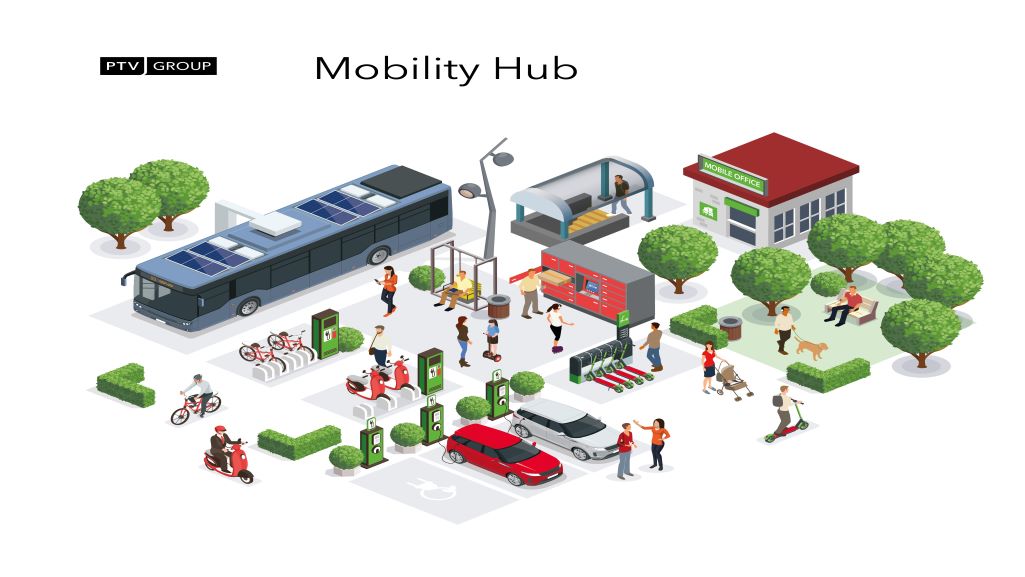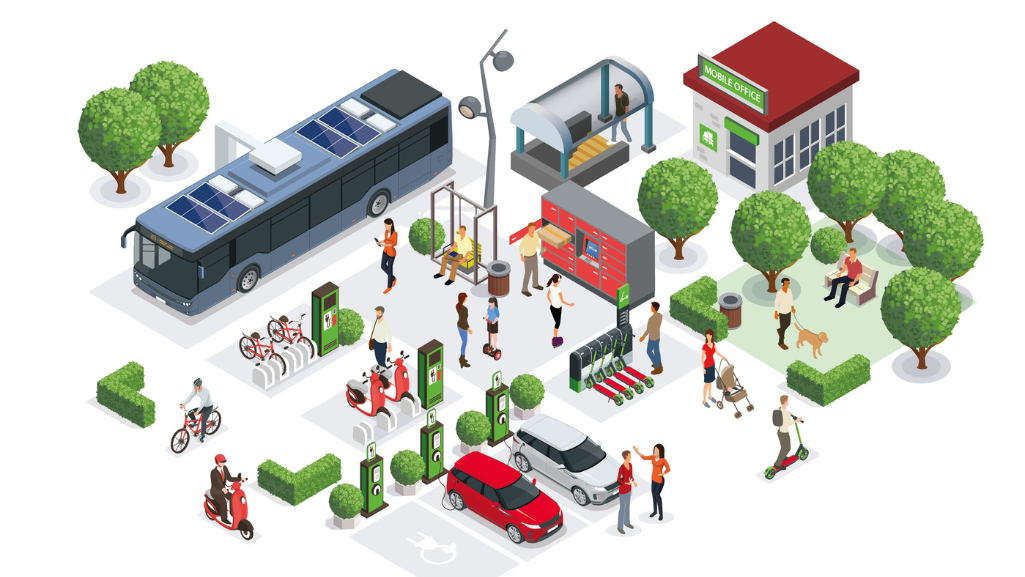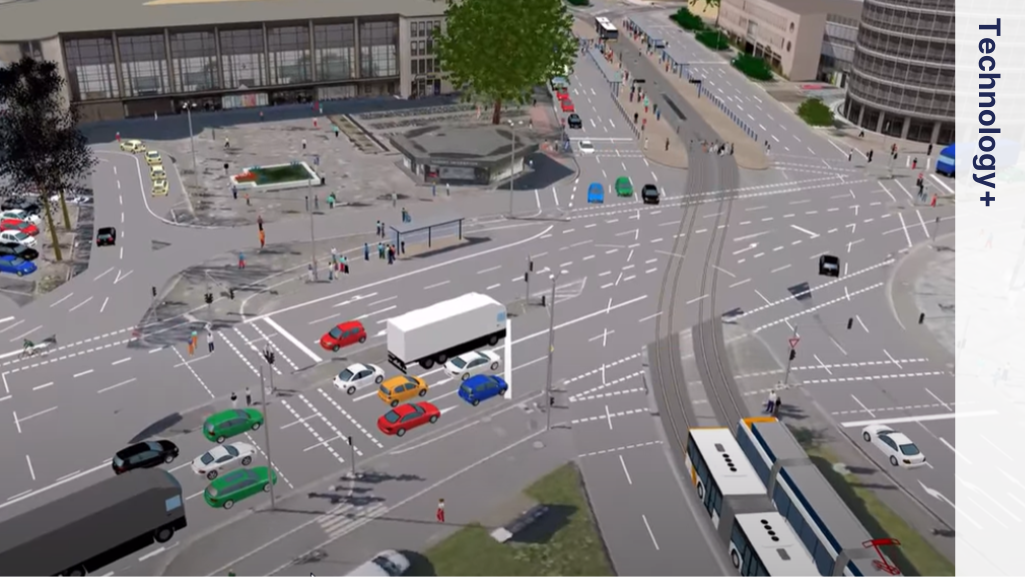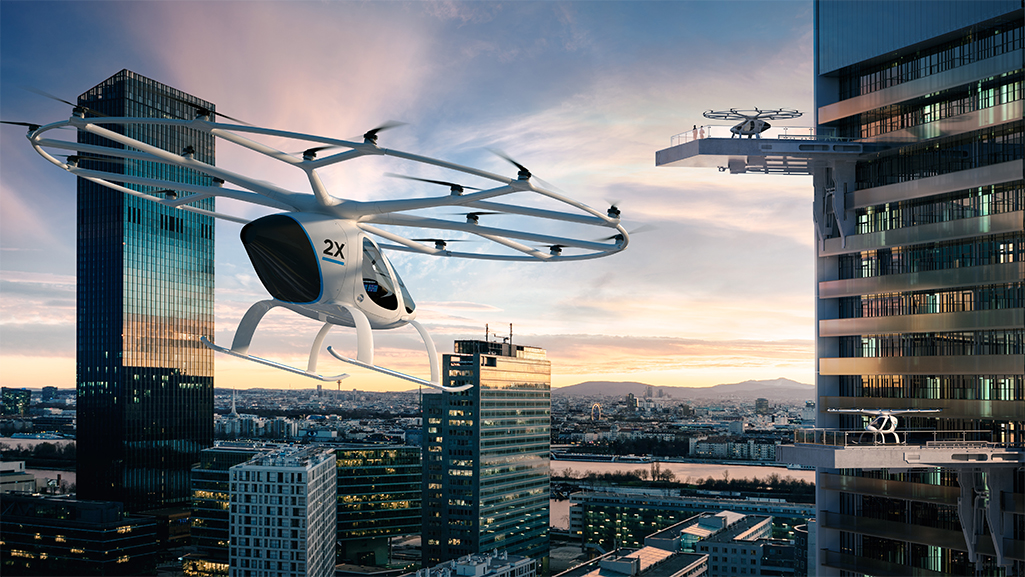To describe a future that includes mobility hubs, it’s important to first find out what they are. In 2021, the Netherlands Institute for Transport Policy Analysis described a mobility hub as a physical link between transport modes, which in addition to its mobility function, can also serve as a concentration point for spatial development.
In simple terms, this means a place where a traveler can choose between many modes of mobility to complete his or her journey. For example, unboard a train and pick up a shared bicycle to until they get home.
For whom are mobility hubs useful?
In short: Mobility hubs are useful to all travelers that need to transfer, and continue their journey from A to B.
Today’s travelers no longer use one mode of transport. Instead, they would like to be able to choose. At mobility hubs, in addition to traditional modes of transport, several shared modes are also present: Bicycles, scooters, buses and electric cars.
This way, the travelers themselves have the freedom to decide how they will travel, depending on the situation at that moment. Ideally, the entire trip and desired means of transport are planned and booked in advance via an app. This is exactly the principle of Mobility as a Service.
On the other hand, a mobility hub also functions as an important control mechanism for public authorities, because it allows them to monitor all the different transport flows.
Moreover, this can contribute to implementing public policy goals. For example, authorities can choose which shared vehicles will be allowed in their city, in order to make transport as efficient and environmentally friendly as possible. This can also contribute to better accessibility and quality of life.
Beyond a good location
Due to increasing pressure on public space, it is important in many cities that streets are not flooded with shared bicycles or scooters. Therefore, authorities should designate locations for mobility hubs, where those shared vehicles can be parked.
These can be busy areas such as bus or train stations; or nodes on the perimeter of the city, where people can park their car and switch to public transport or a shared bike. This way, public authorities can keep motorized traffic away from city centers.
Public authorities can also steer the mobility behavior of residents at newly built areas. Moving into a new home is a life-changing event, so it can be a great timing to change one’s mobility behavior. By setting up mobility hubs at new areas, and offering in them a variety of shared services, even die-hard motorists will be encouraged to give up their aging diesel cars.
Designing mobility hubs
The success of a mobility hub is not only determined by its location, but also by its design. As mentioned before, the hub can also be a magnet for spatial development.
Every location with a big number of travelers is attractive for businesses, such as real estate, hospitality, and culture institutions. Hence, a mobility hub increases the economic activity around it and becomes a real meeting place for people, a pleasant point to also stay.
It’s also not hard to imaging flexible workplaces popping up at mobility hubs. Especially now, when remote and time-flexible working is becoming the norm, a hub is the perfect office. After work, people can immediately pick up their postal packages, since this is a good location to place collection points.
This, in turn, reduces the number of logistical trips by postal delivery companies in city centers, and so supports public authorities which aim to reduce traffic.
Do mobility hubs affect the environment?
To make mobility hubs more attractive, public authorities can include green spaces in them. This has a twofold effect: New parks and planting help reduce CO2 emissions and improve air quality.
Also, if mobility hubs reduce use of diesel vehicles, this improves air quality in the often busy and polluted city centers.
Mobility hubs and future mobility
So, as you’ve read, there are numerous advantages to mobility hubs. But how should planners decide where are the best locations to build them? Traditional traffic modelling is no longer sufficient to determine the best strategic locations for mobility hubs.
In those models, journeys are often reduced to a single mode of transport; the transport to and from the hub is not considered. As a result, the car often emerges as the “winning mode” – probably causing the mobility hub to slowly die out.
At PTV Group, we’ve already developed macroscopic traffic modelling. This means that several modes of mobility are considered, in order to tackle long-term issues on the strategic level. We do this with our traffic planning software PTV Visum, which develops advanced and future-proof traffic strategies and solutions based on GIS data and the built-in traffic model.
This allows different strategies and “what if” scenarios to be assessed for different modes of mobility. The traffic simulation tool PTV Vissim can be integrated into this. This allows detailed mapping and forecasting of traffic situations.



